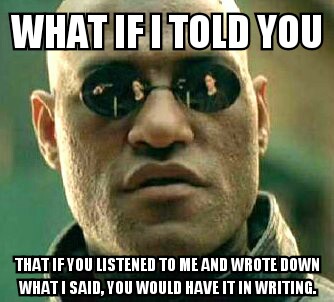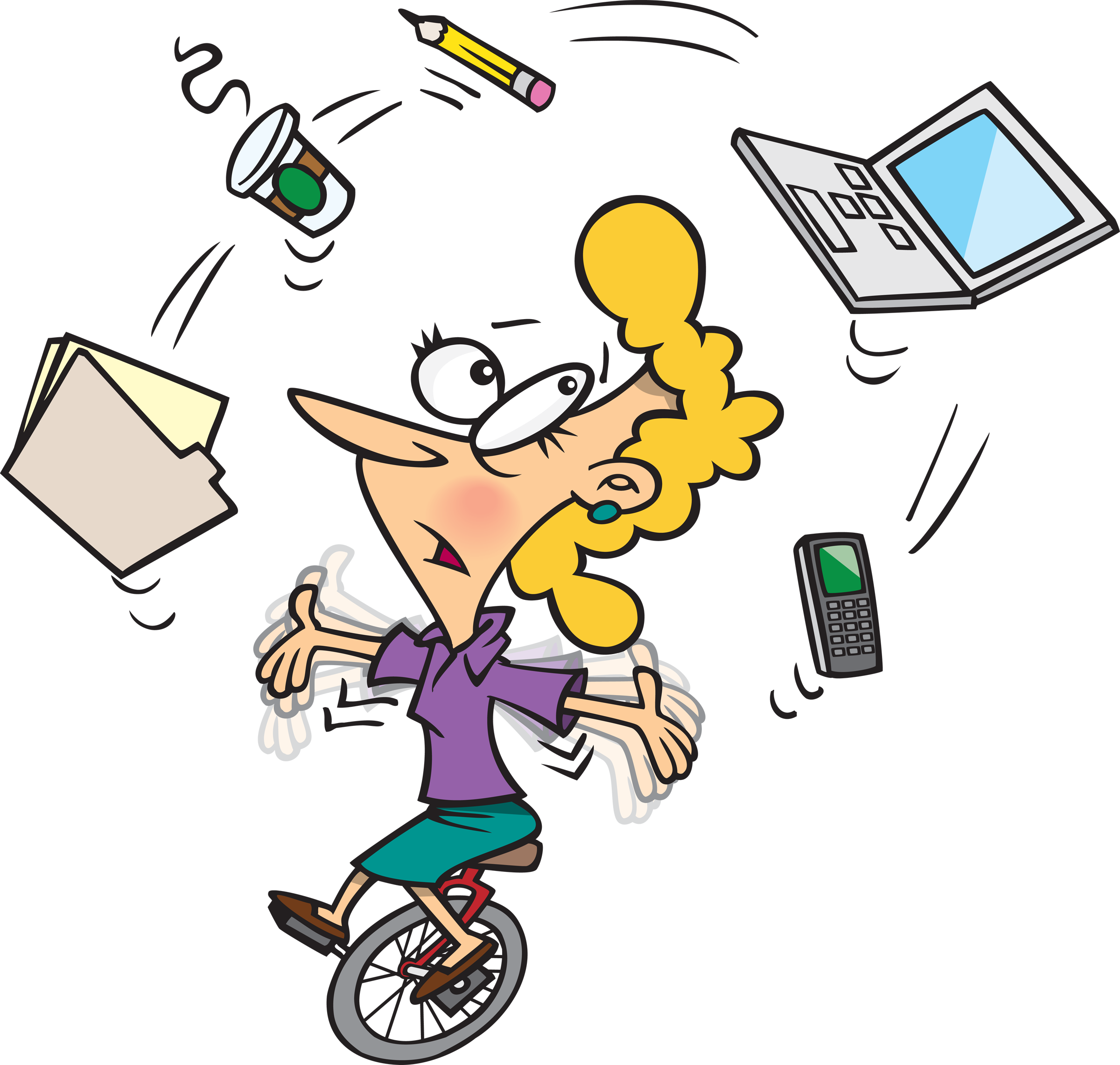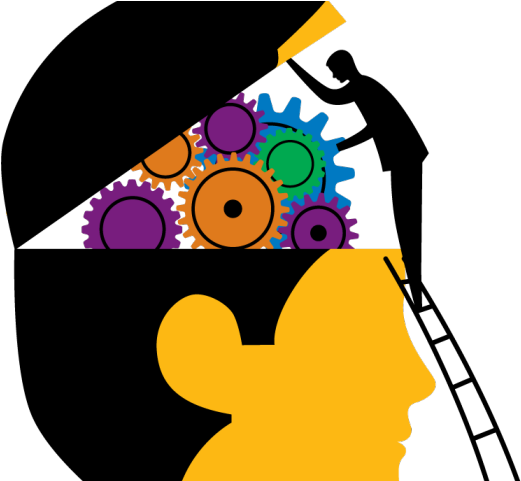|
Taking Notes in Class

Taking notes in class is just the first part of an active learning process.
Using notes to learn material involves consistently rewriting material so that it becomes better organized, is written and organized in such a way that it makes logical sense to you, and evolves through the semester as your understanding of the material evolves.
Tending to your notes over the course of a semester is not unlike tending a garden. You will constantly plant new things, remove things that are no longer useful, and weed out things that do not really belong. Just like a garden, you don’t just plant things and walk away, hoping that when you return at the end of the semester that everything is ready to harvest.
Try different note-taking methods (described in the material below) before deciding which works best for you in each of your courses.
|
|
Taking Notes by Hand
 The research is very clear regarding the connection between fine-motor activities and long-term memory. Fine-motor skills include writing by hand, drawing, painting, and the precise tongue movements involved in speech. Typing does not involve fine-motor skills. Using fine-motor skills while learning material causes us to pass material repeatedly through the hippocampus, which in turn facilitates forming memories in long-term. The same process does not occur when typing information. The research is very clear regarding the connection between fine-motor activities and long-term memory. Fine-motor skills include writing by hand, drawing, painting, and the precise tongue movements involved in speech. Typing does not involve fine-motor skills. Using fine-motor skills while learning material causes us to pass material repeatedly through the hippocampus, which in turn facilitates forming memories in long-term. The same process does not occur when typing information.
Laptops and Taking Notes
Notes on Note-Taking: Review of Research and Insights for Students and Instructors
Cohen, D., Kim, E., Tan, J., & Winkelmes, M. (2013). A note-restructuring intervention increases students’ exam scores. College Teaching, 61, 95-99. https://doi.org/10.1080/87567555.2013.793168
James, K. H., & Engelhardt, L. (2012). The effects of handwriting experience on functional brain development in pre-literate children. Trends in Neuroscience and Education, 1, 32-42. https://doi.org/10.1016/j.tine.2012.08.001
Mueller, P. A., & Oppenheimer, D. M. (2014). The pen is mightier than the keyboard: Advantages of longhand over laptop note taking. Psychological Science, 25, 1159-1168. https://doi.org/10.1177%2F0956797614524581
Mangen A., & Velay, J. (2010). Digitizing literacy: Reflections on the haptics of writing. . In M. H. Zadeh (Ed.) Advances in haptics. (pp. 385-401). Rijeka, Croatia: InTech. https://doi.org/10.5772/8710
|
|
Multitasking is Not a Thing
 Research has repeatedly demonstrated that students who think they are "multitasking" are really just performing lots of tasks poorly. Not only are they adversely impacting their performance, they are negatively impacting every student around them. Research has repeatedly demonstrated that students who think they are "multitasking" are really just performing lots of tasks poorly. Not only are they adversely impacting their performance, they are negatively impacting every student around them.
When you come to a face-to-face class, leave your computer at home and your phone in your pocket.
Bellur, S., Nowak, K. L., & Hull, K. S. (2015). Make it our time: in class multitaskers have lower academic performance. Computers in Human Behavior, 53, 63-70. https://doi.org/10.1016/j.chb.2015.06.027
Sana, F., Weston, T., & Cepeda, N. J. (2013). Laptop multitasking hinders classroom learning for both users and nearby peers. Computers and Education, 62, 24-31. https://doi.org/10.1016/j.compedu.2012.10.003
Wammes, J. D., Ralph, B. C. W., Mills, C., Bosch, N., Duncan, T. L., & Smilek, D. (2019). Disengagement during lectures: media multitasking and mind wandering in university classrooms. Computers and Education, 132, 76-89. https://doi.org/10.1016/j.compedu.2018.12.007
White, B. M., Lindberg, R., Ernst, B., Bowman, L. L., & Levine, L. E. (2018). Off-task multitasking, note-taking and lower- and higher-order classroom learning. Computers and Education, 120, 98-111. https://doi.org/10.1016/j.compedu.2018.01.007
Zhang, W. (2015). Learning variables, in-class laptop multitasking and academic performance: A path analysis. Computers and Education, 81, 82-88. https://doi.org/10.1016/j.compedu.2014.09.012
|
|
The Myth of Learning Styles
 The persistent myth of "learning styles" is one of the most pervasive impediments to teaching. Similar to trying to rid yourself of zombies, it seems as if every time this myth gets knocked down, it rises up again. The persistent myth of "learning styles" is one of the most pervasive impediments to teaching. Similar to trying to rid yourself of zombies, it seems as if every time this myth gets knocked down, it rises up again.
Research spanning back more than two decades has repeatedly shown that not only do learning styles not exist, but believing in their existence contributes to serious impediments in helping students to learn how to learn. The research is also quite clear that there is no such thing as "natural ability". Experience is the key to strengthening abilities.
Every student excels at different learning skills. Some students read better than others. Some students are better at listening and picking up verbal cues from the speaker. Some students excel at seeing things that others do not. However, focusing on the abilities that you excel at means that you will never get better at the abilities that you do not excel at.
Athletes do not just work on the sport that they excel at. In order to be a good athlete, you have to spend considerable time and effort working on the things you donít excel at. Similar to being an athlete, students need to work on a variety of different learning skills in order to improve their overall performance.
The Myth of 'Learning Styles'
The "Learning Styles" Myth Is Still Prevalent Among Educators
Dekker, S., Lee, N. C., Howard-Jones, P., & Jolles, J. (2012). Neuromyths in education: Prevalence and predictors of mis-conceptions among teachers. Frontiers in Psychology, 3, 429. https://doi.org/10.3389/fpsyg.2012.00429
Husmann, P. R., & O'Loughlin, V. D. (2018). Another nail in the coffin for learning styles? Disparities among undergraduate anatomy students' study strategies, class performance, and reported VARK learning styles. Anatomical Sciences Education, 12, 6-19. https://doi.org/10.1002/ase.1777
Jennings, M. M. (2012). In defense of the sage on the stage: Escaping from the "sorcery" of learning styles and helping students learn how to learn. Journal of Legal Studies Education, 29, 191-237. https://doi.org/10.1111/j.1744-1722.2012.01105.x
Kaufman, S. B. (2018). Enough with the "learning styles" already! Scientific American, December 8, 2018.
Khazan, O. (2018). The myth of 'learning styles'. The Atlantic, April 11, 2018.
Kirschner, P. A. (2017). Stop propagating the learning styles myth. Computers and Education, 106, 166-171. https://doi.org/10.1016/j.compedu.2016.12.006
Knoll, A. R., Otani, H., Skeel, R L. & Van Horn, K. R. (2017). Learning style, judgements of learning, and learning of verbal and visual information. British Journal of Psychology, 108, 544-563. https://doi.org/10.1111/bjop.12214
Macdonald, K., Germine, L., Anderson, A., Christodoulou, J., & McGrath, L. M. (2017). Dispelling the myth: Training in education or neuroscience decreases but does not eliminate beliefs in neuromyths. Frontiers in Psychology, 8, 1314. https://doi.org/10.3389/fpsyg.2017.01314
Nancekivell, S. E., Shah, P., & Gelman, S. A. (2019). Maybe they're born with it, or maybe it's experience: Toward a deeper understanding of the learning style myth. Journal of Educational Psychology, 112, 221-235. http://dx.doi.org/10.1037/edu0000366
Newton, P. M., & Miah, M. (2017). Evidence-based higher education - is the learning styles 'myth' important? Frontiers in Psychology, 8, 444. https://doi.org/10.3389/fpsyg.2017.00444
Papadatou-Pastou, M., Gritzali, M., & Barrable, A. (2018). The learning styles educational neuromyth: Lack of agreement between teachers' judgments, self-assessment, and students' intelligence. Frontiers of Education, 3, 105. https://doi.org/10.3389/feduc.2018.00105
Pashler, H., McDaniel, M., Rohrer, D., & Bjork, R. (2009). Learning styles: Concepts and evidence. Psychological Science in the Public Interest, 9, 105-119. https://doi.org/10.1111 2Fj.1539-6053.2009.01038.x
Rogowsky, B. A., Calhoun, B. M., & Tallal, P. (2015). Matching learning style to instructional method: Effects on comprehension. Journal of Educational Psychology, 107, 64-78. https://psycnet.apa.org/doi/10.1037/a0037478
Tardif, E., Doudin, P., & Meylan, N. (2019). Neuromyths among teachers and student teachers. Mind, Brain, and Education, 9, 50-59. https://doi.org/10.1111/mbe.12070
|
|



